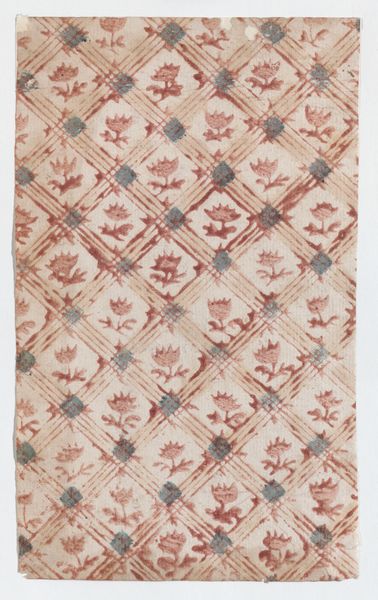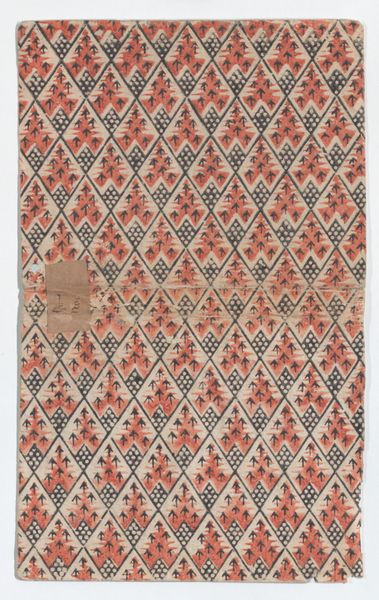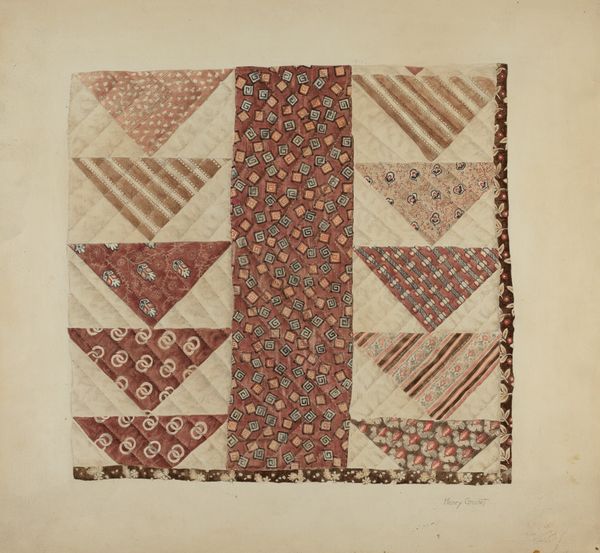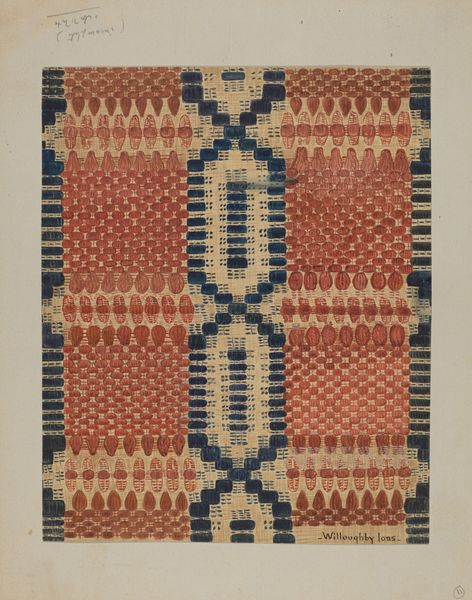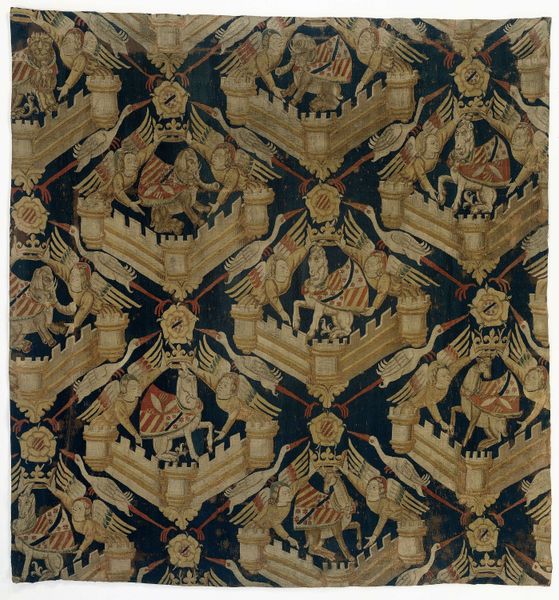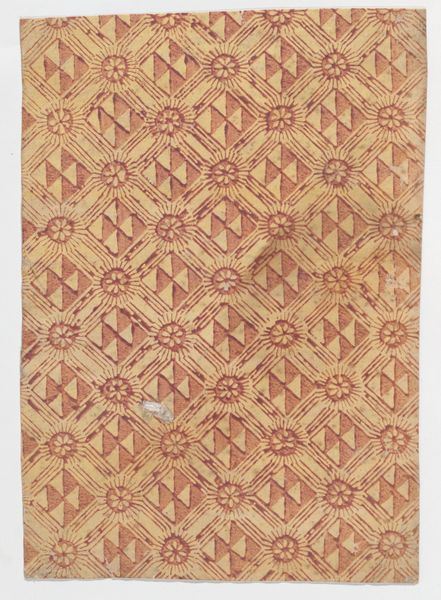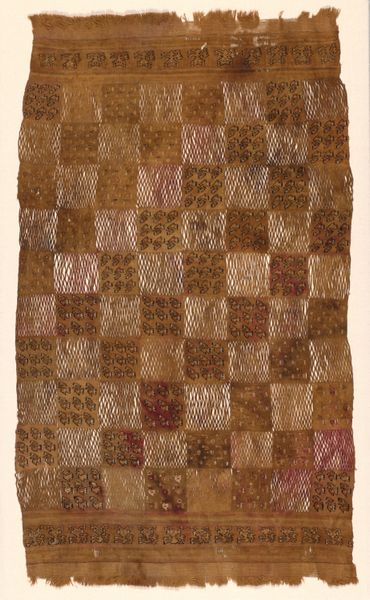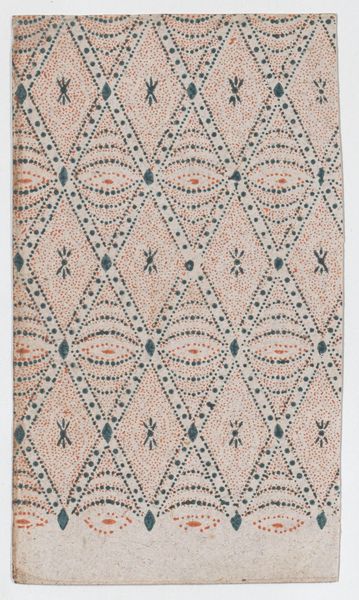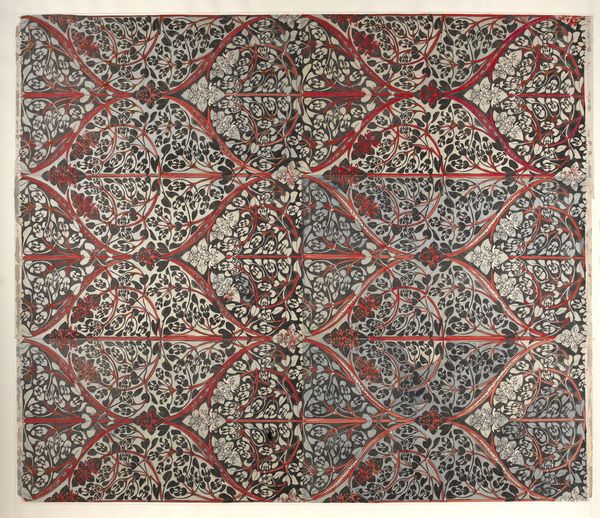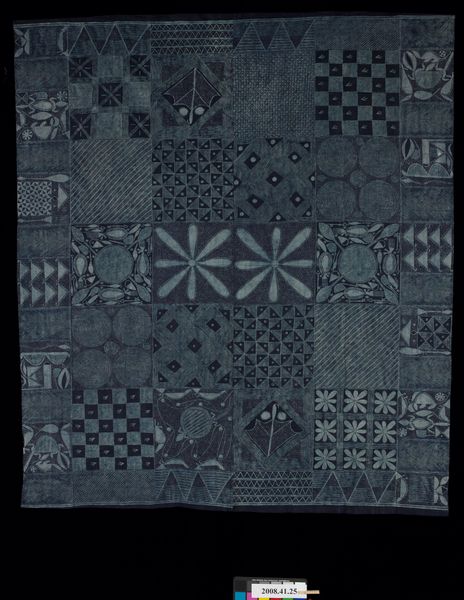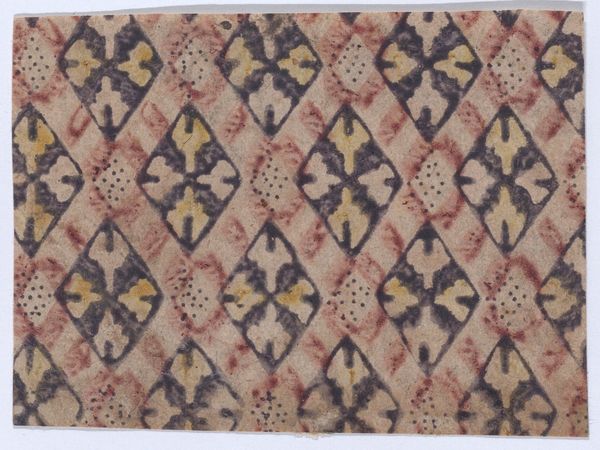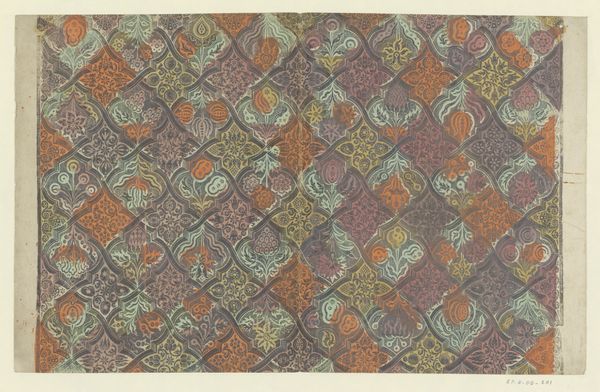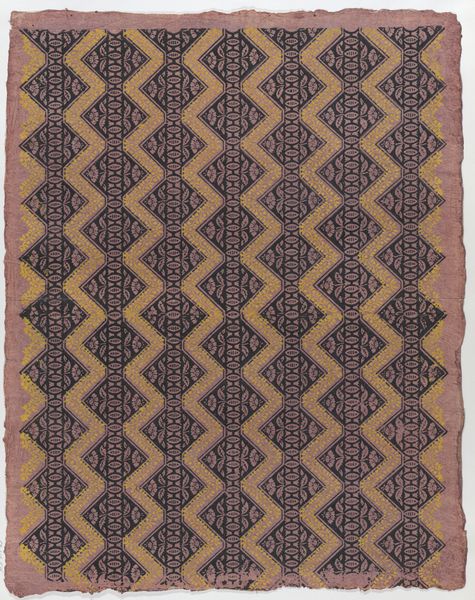
Centennial Print (Furnishing Fabric) c. 1875
0:00
0:00
print, textile
# print
#
textile
#
geometric pattern
#
organic pattern
#
geometric
Dimensions: 71.1 × 63.5 cm (28 × 25 in.) Repeat: 13.9 × 21.9 cm (5 1/2 × 8 5/8 in.)
Copyright: Public Domain
Editor: Here we have the "Centennial Print (Furnishing Fabric)" made around 1875 by the Cocheco Manufacturing Company. It's a fascinating example of textile art, weaving and printing techniques creating a compelling geometric pattern. It strikes me as incredibly busy, almost overwhelming in its detail. What's your take on this piece? Curator: The 'busy-ness,' as you put it, is precisely where its symbolic power lies. Consider the Centennial; a moment of national self-reflection. Each pattern, from the paisley-esque swirls to the rigid geometric shapes, carries echoes of different cultural influences converging in America. It's not just about aesthetics; it’s about cultural memory being woven – quite literally – into the fabric of everyday life. Do you see how the contrasting patterns could be read as a microcosm of society at the time? Editor: I see what you mean about cultural influences. The star motif definitely reads as overtly American, but then you have the paisley pattern...almost South Asian-inspired? It’s interesting how they clash and yet coexist. Curator: Precisely! And it goes deeper. Paisley, initially a symbol of fertility and life, by the Victorian era was associated with mass production. Consider the industrial context – this was machine-made. Are these celebrations, perhaps ambivalent ones, of industrialization embedded within this centennial design? These aren’t merely decorative choices. Each symbol builds an impression on both the conscious and subconscious mind, informing future interpretations of culture and our place within it. Editor: So, this fabric isn’t just a pretty pattern, it’s a coded message about America at 100. Curator: Exactly! It reveals an intricate tapestry, not merely woven threads, of social and cultural meanings which, in my view, allows it to persist conceptually into our modern society. It tells a complex story, of nationhood, industry, immigration, identity and aspiration, doesn’t it? Editor: I will definitely be thinking of textiles differently now, considering their symbolic load and history.
Comments
No comments
Be the first to comment and join the conversation on the ultimate creative platform.
